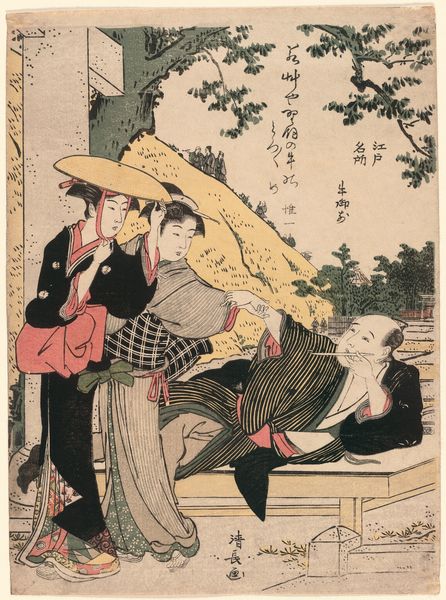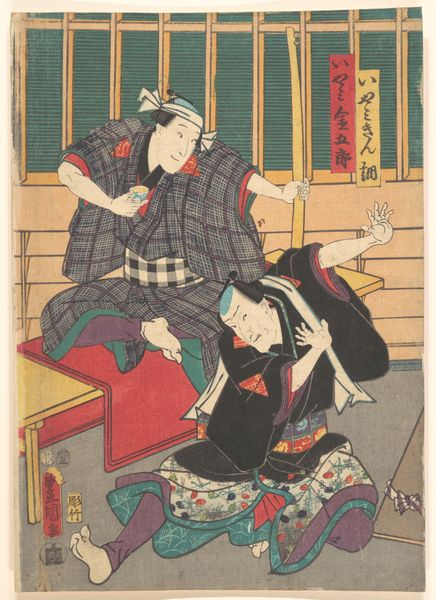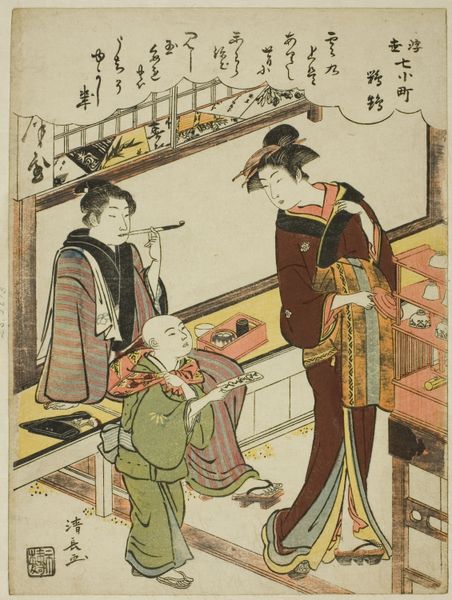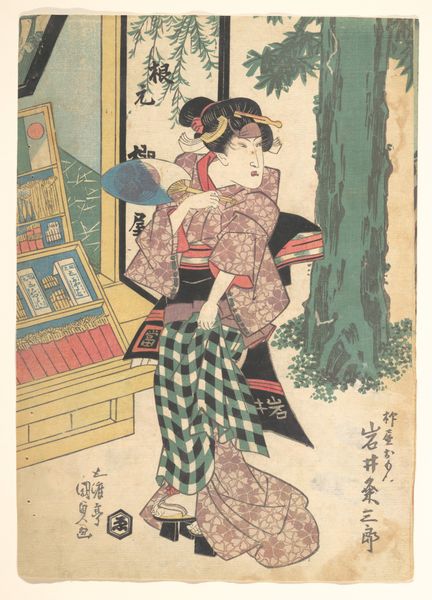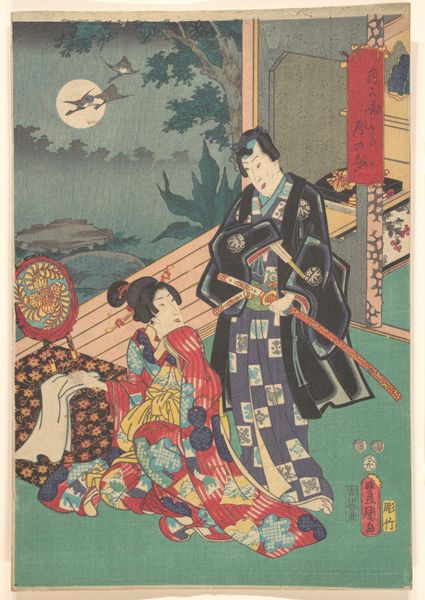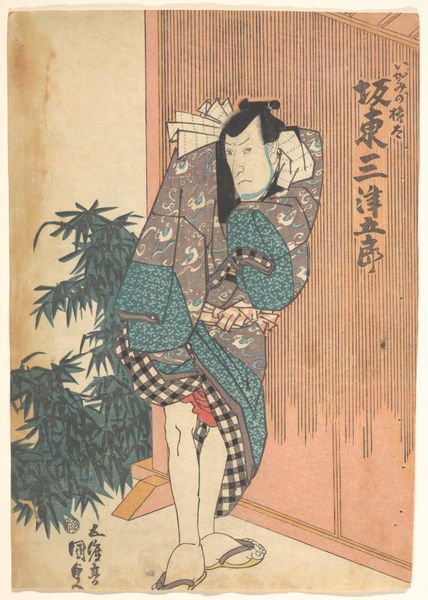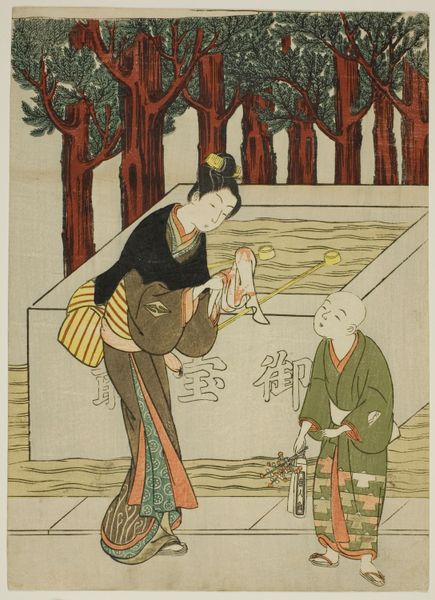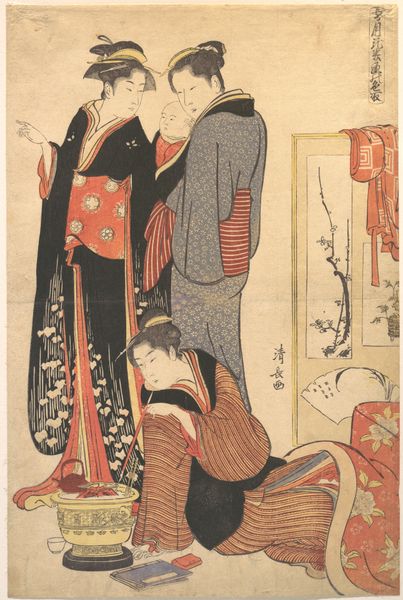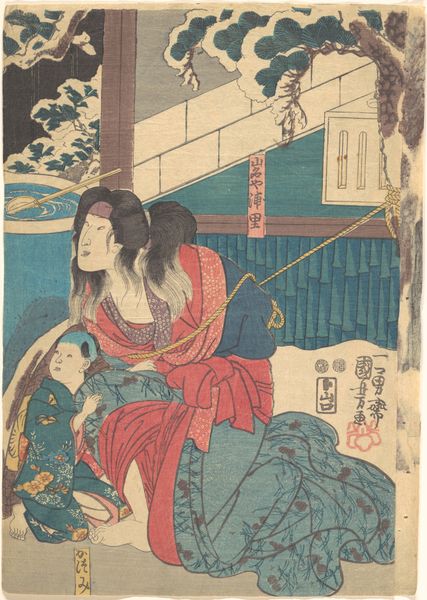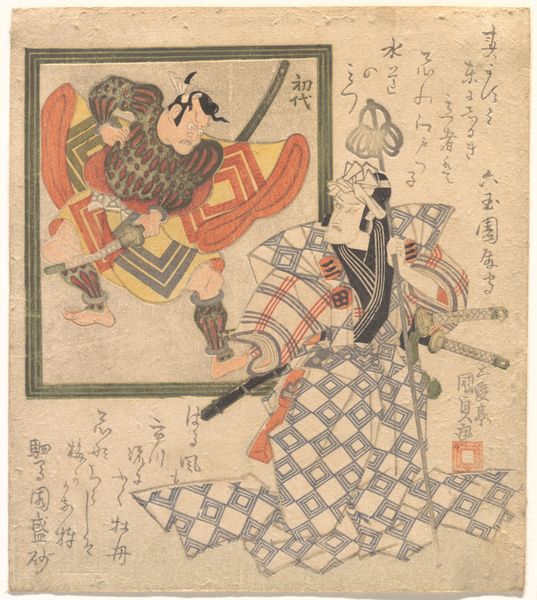
print, woodblock-print
#
weapon
# print
#
asian-art
#
landscape
#
ukiyo-e
#
figuration
#
coloured pencil
#
woodblock-print
#
men
Dimensions: Image: 13 5/8 × 9 5/8 in. (34.6 × 24.4 cm)
Copyright: Public Domain
Editor: So, this print by Utagawa Kunisada, dating from between 1800 and 1865, is pretty striking. It’s currently housed at the Metropolitan Museum of Art. The figure seems to be leaping off a boat... it's dynamic, but also a little puzzling. What do you see in this piece, especially considering its historical context? Curator: Well, what immediately catches my eye is the figure’s placement within the context of ukiyo-e prints and their role in popular culture. These prints weren’t just art; they were mass-produced commodities. The subject, likely a Kabuki actor in a dynamic pose, was carefully crafted for an audience steeped in theatrical traditions. The choice of the dramatic stance, the elaborate costume – how do these elements strike you in terms of the image's cultural impact? Editor: I guess I see the drama you're talking about. But the guy seems…almost cartoonish? Were these prints like, I don't know, early comic books for the masses? Curator: To an extent, yes. These prints made cultural icons and narratives accessible. What about the landscape? The simplified trees and background serve a crucial role in directing the viewer's eye toward the figure. Landscape in ukiyo-e evolved from being purely scenic to active framing elements. This shift mirrored changing social values and urban entertainment consumption in Japan. Consider how the artist uses colour and line. Editor: Now that you mention it, the strong lines do seem important for that dramatic effect and the colour... it gives it a sense of heightened reality. Almost dream-like. Curator: Precisely. And in what ways did such theatrical depictions play into the cultural moment? Ukiyo-e reflected a vibrant urban culture, where theater and printmaking provided a shared public stage for spectacle. And helped reinforce particular idealized notions. Editor: I hadn't really considered the print as a social object before. That makes me see the scene and the subject of this print completely differently! Thank you for opening my eyes.
Comments
No comments
Be the first to comment and join the conversation on the ultimate creative platform.
